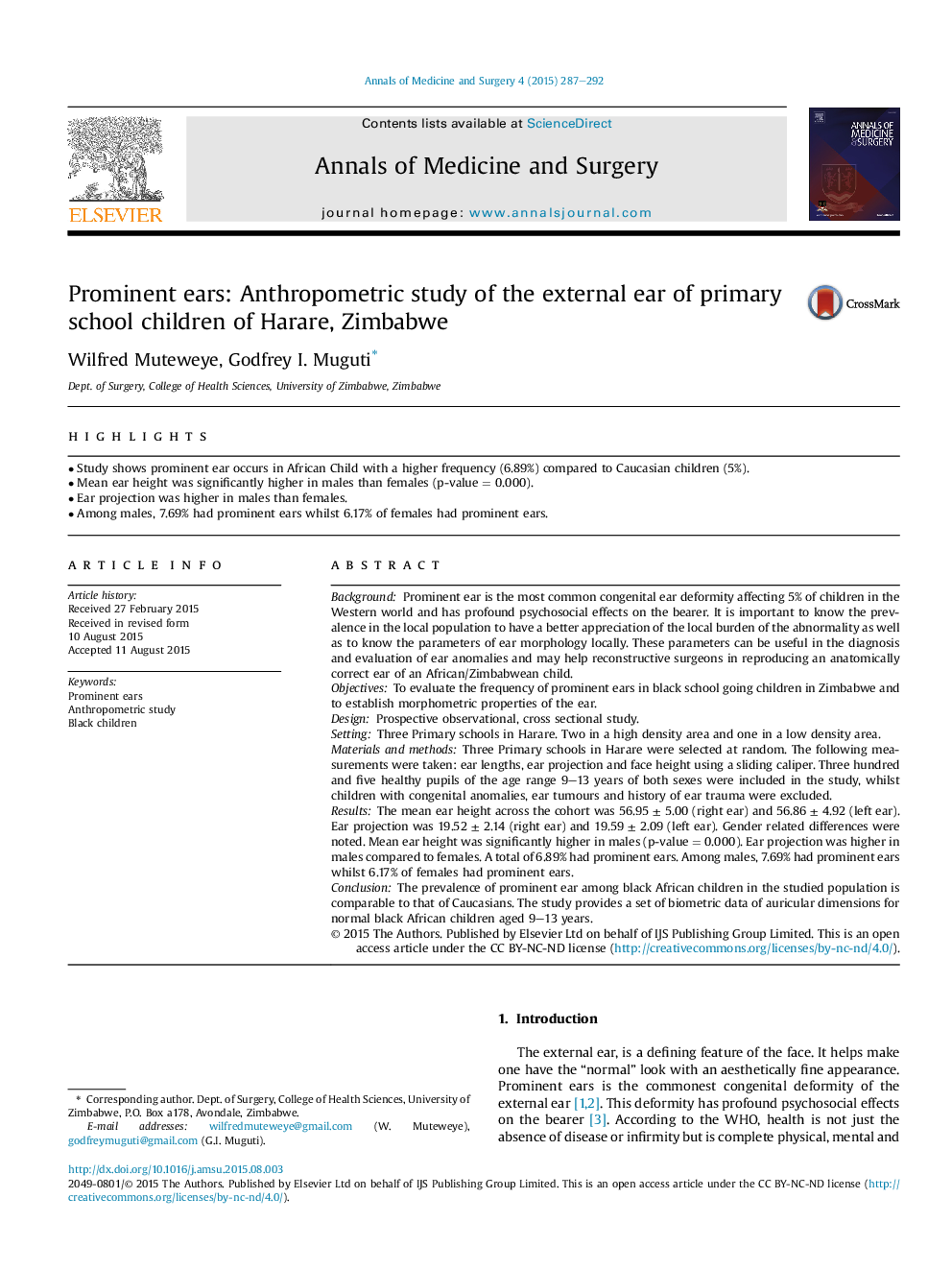| کد مقاله | کد نشریه | سال انتشار | مقاله انگلیسی | نسخه تمام متن |
|---|---|---|---|---|
| 4195389 | 1608926 | 2015 | 6 صفحه PDF | دانلود رایگان |
• Study shows prominent ear occurs in African Child with a higher frequency (6.89%) compared to Caucasian children (5%).
• Mean ear height was significantly higher in males than females (p-value = 0.000).
• Ear projection was higher in males than females.
• Among males, 7.69% had prominent ears whilst 6.17% of females had prominent ears.
BackgroundProminent ear is the most common congenital ear deformity affecting 5% of children in the Western world and has profound psychosocial effects on the bearer. It is important to know the prevalence in the local population to have a better appreciation of the local burden of the abnormality as well as to know the parameters of ear morphology locally. These parameters can be useful in the diagnosis and evaluation of ear anomalies and may help reconstructive surgeons in reproducing an anatomically correct ear of an African/Zimbabwean child.ObjectivesTo evaluate the frequency of prominent ears in black school going children in Zimbabwe and to establish morphometric properties of the ear.DesignProspective observational, cross sectional study.SettingThree Primary schools in Harare. Two in a high density area and one in a low density area.Materials and methodsThree Primary schools in Harare were selected at random. The following measurements were taken: ear lengths, ear projection and face height using a sliding caliper. Three hundred and five healthy pupils of the age range 9–13 years of both sexes were included in the study, whilst children with congenital anomalies, ear tumours and history of ear trauma were excluded.ResultsThe mean ear height across the cohort was 56.95 ± 5.00 (right ear) and 56.86 ± 4.92 (left ear). Ear projection was 19.52 ± 2.14 (right ear) and 19.59 ± 2.09 (left ear). Gender related differences were noted. Mean ear height was significantly higher in males (p-value = 0.000). Ear projection was higher in males compared to females. A total of 6.89% had prominent ears. Among males, 7.69% had prominent ears whilst 6.17% of females had prominent ears.ConclusionThe prevalence of prominent ear among black African children in the studied population is comparable to that of Caucasians. The study provides a set of biometric data of auricular dimensions for normal black African children aged 9–13 years.
Journal: Annals of Medicine and Surgery - Volume 4, Issue 3, September 2015, Pages 287–292
